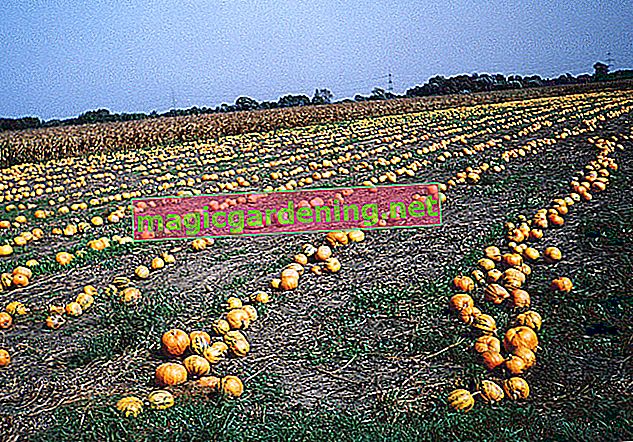
Select and separate the right flowers
The selection of suitable flowers initiates manual pollination. Female flowers feature a mini pumpkin on the style. The more numerous male flowers have no thickening on the stem.
- the ideal flowers are at a distance of 1.5-2 meters from the planting site
- they are positioned so that their stalk does not break off
- there is no doubt that it is a fruit-set female flower
also read
- How to dust chilli for single-origin seeds
- Pollinate the apple tree sufficiently for a better harvest
- Does cutting back pumpkin make sense?
Now remove all flowers that do not meet the criteria. Wrap the selected female and male specimens in a small, close-meshed insect screen. This way, overzealous insects cannot tamper with it.
Shortly measured flowering time for pollination
Usually a pumpkin blossom opens in the early hours of the morning. By noon it will have withered again. This opens up only a small window of time for manual pollination. How to do it:
- remove the protective covers from the flowers
- break off the male flower and pick off all the petals
- Rub the pollen of the male onto the stigma of the female flower similar to a brush
- then wrap the pollinated flower again
If the fruit set begins to grow after 2 to 3 days, this is the signal for successful pollination. The insect net will now be removed. In addition, pluck the foliage directly from the fruit stalk because it uses a lot of energy.
How many flowers should be pollinated per plant?
It's a simple calculation. The fewer flowers of a plant are pollinated, the more volume the pumpkins develop. This means that for a giant pumpkin only one flower has to be fertilized. We recommend including a reserve bloom in the process.
Tips & Tricks
If you want to cross two varieties in a targeted manner, you can improve the quality of the seeds by harvesting them when they are fully ripe. In addition, subsequent ripening in the room has a beneficial effect on the germination of the seeds.







